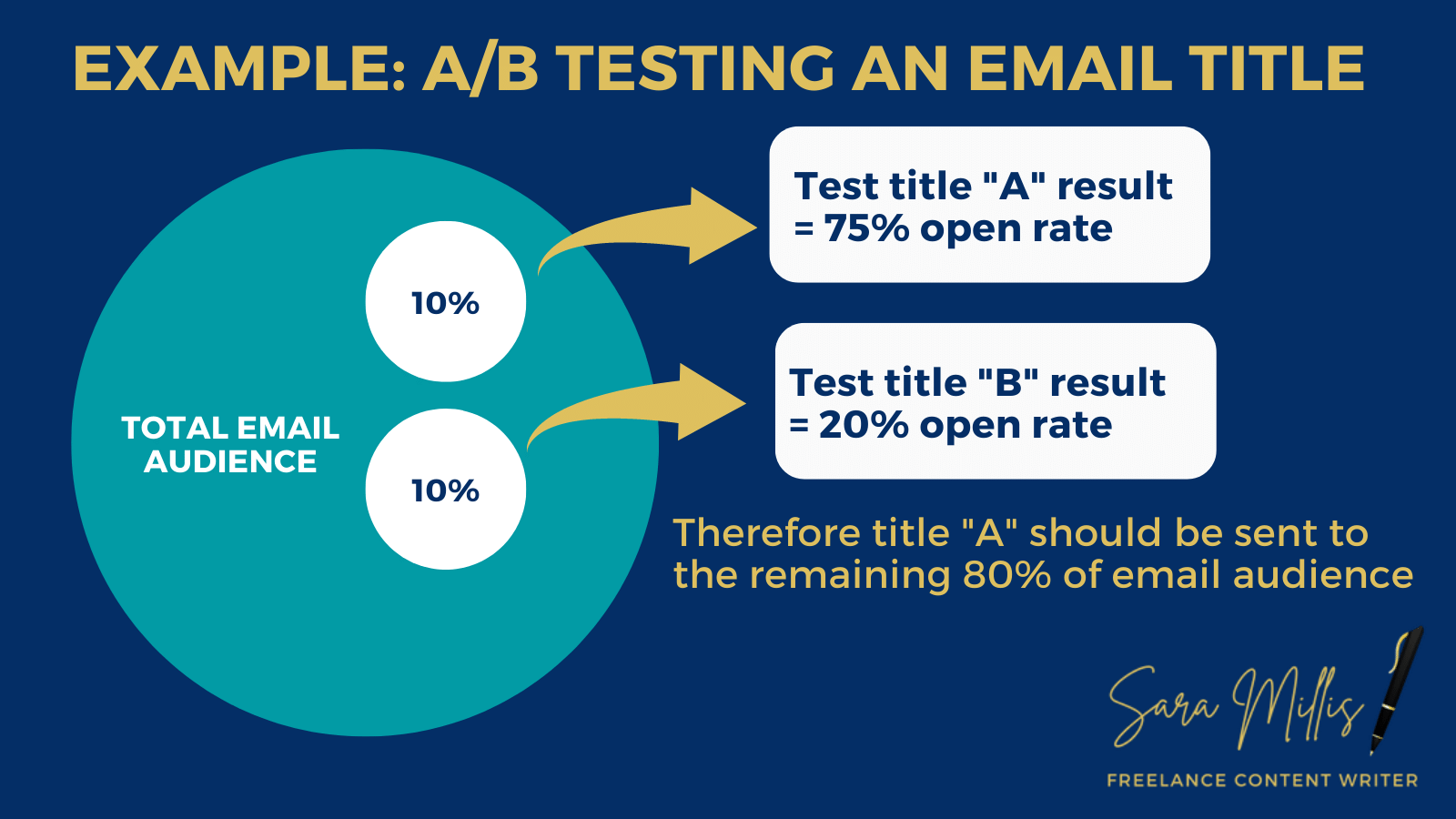What is A/B Testing and how can I use it?
A/B testing experiments between two different ways of writing content, with just small variations between them. The concept is broadly used in email and blog post titles, Calls to Action (CTA), or on larger content pieces, such as landing pages or sales pages. The idea is that by using small tweaks in your copy, across a small cross section of your audience, you can determine the best estimated results, or return on investment (ROI) for the rest of your audience.
Here is an example of A/B testing
Let’s imagine you wish to send an email to your newsletter subscribers asking them to book tickets for your new event. To access the best ROI on your email title, in terms of open rate you need to experiment with A/B testing.
You choose a 20% cross section of your audience. 10% for test A and 10% for test B. The email title for test A reads: “You’re Invited! Book your seat at SEO Mastermind TODAY”, whereas the email title for test B reads “BOOK NOW! You are invited to our SEO Mastermind event”.
You wait for a set period of time, let’s say 24 hours and analyse the open rate for titles A and B. Title A performs at 75% open rate, whereas title B performs at just 20%. The highest performing title email, in this case A, is then sent to the remainder of your mailing list, with the expectation that it will perform better in getting your audience to open your event email.
Over time A/B testing can reveal very interesting insights to your customer base and you will be able to gauge which words and phrases gain the most traction in your targeted copy. You may find certain works work better when you talk about products, by comparison to services, events, or general news. From these patterns you will be able to devise a more structured strategy for different areas of your business.
The A/B testing rules can be applied to many different marketing tools.
When do I use A/B testing?
You will see A/B testing regularly used in a number of online platforms and in particular if you shop with ecommerce sites, such as Amazon you will notice that A/B testing is broadly used across the site, the app and ad campaigns in a number of ways, to build a platform that converts through (in their case) personalised shopping experiences.
“Our success at Amazon is a function of how many experiments we do per year, per month, per week, per day...”
So to answer ‘when’ you should use A/B testing? If you have the capability, you have the opportunity to A/B test regularly across your site, sales offerings, ads, email marketing and even social media.
A/B testing tips
A/B testing can be as simple, or as complex as you need it to be, in this marketing terms dictionary entry I have oversimplified the experiment example to make a point. Here are some tips if you’d like to start A/B testing in your business:
Understand your desired CTA from your test - make sure your intent is clear, so results give you determinable answers and not more questions.
Research your customer language - learning to speak in language and phrases that your target audience prefers generates more connection and generally better results.
Limit the test variables - Stick to one A/B test per experiment, to achieve a cleaner result you can work with, in order to create an ongoing strategy.
Really analyse your results - don’t just select the best option in that test, establish why it performs better by testing it in other content types.
Retest if needed - Don’t just test once and then reuse those copy words, or phrases time and again, because as audiences grow they also evolve. The same copy that worked last year, may not be applicable this year.
Look for patterns over time - Regular testing creates a database of results, from which you can draw patterns, or consumer behaviour from. This is incredibly useful if you want to start deeper testing, or tweaking for better results.
If you need a copywriter to create compelling copy, someone who understands the customer journey, fill in the project brief form below!





